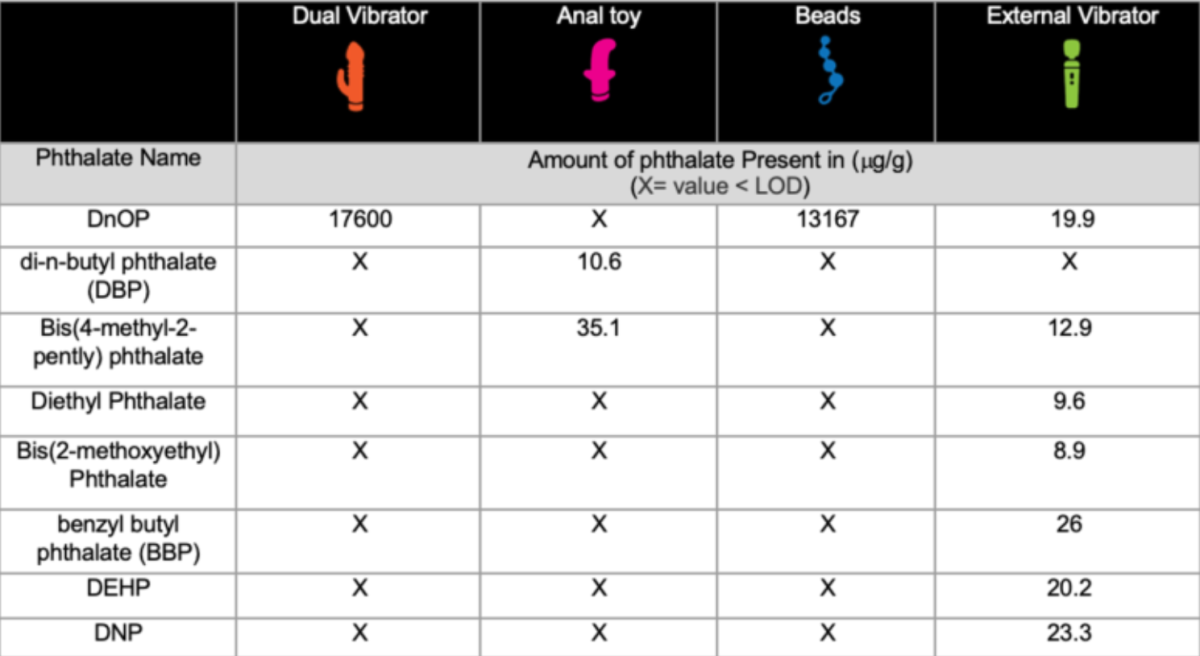Scientists have discovered that various types of sex toys may be capable of shedding microplastics and other dangerous chemicals.
Four forms of sex toys—dual vibrators, external vibrators, anal toys and anal beads—were found to contain phthalates, which are chemicals known to cause damage to the liver, kidneys and reproductive system at high concentrations, according to a study published in the journal Microplastics and Nanoplastics. The chemicals were found in the sex toys at levels above the U.S. regulations and EU standards for children's toys.
The toys were also found to deposit nanoplastic fragments after being mechanically rubbed and scraped.

Sex toys are increasingly popular in the U.S. More than half of straight U.S. women and just under half of straight U.S. men between the ages of 18 and 60 have used a vibrator, while 70.6 percent of lesbian women, 79.7 percent of bisexual women and 78.5 percent of gay or bisexual men have used a sex toy. The sex product market is predicted to reach $50 billion by 2025, and many countries saw huge spikes in sex toy purchases during the COVID-19 lockdowns.
The Microplastics and Nanoplastics study authors tested the toys' phthalate content, finding that they all contained varying levels of the chemicals.
Phthalates are chemicals used to make plastics more durable, and are found in a vast array of products, ranging from vinyl flooring to soap and shampoos, according to the U.S. Centers for Disease Control and Prevention. A large number of people are exposed to phthalates, and although the exact effects they have on the human body are unclear, some studies on rodents have found that they may impact the rodents' fertility and reproductive system.

"Some of the phthalates identified in our experiments have been observed concurrently with serious fertility complications or loss of fertility in rodents at high concentrations," the authors wrote in the paper, "though causation may not have been demonstrated, the correlation is concerning enough to warrant further investigation."
The U.S. Consumer Product Safety Commission does not currently require products containing such chemicals to warn the user on the label. Some of the toys in the study were labeled as "phthalate-free" but were found to contain the chemicals, and others contained concentrations of phthalates exceeding U.S. regulatory and EU regulatory standards for similar products, like children's toys.
"We assert that since the measured presence of phthalates in our small sample size exceeds the exposure limit for the same chemicals in the US Consumer Product Safety Commission (CPSC) regulations in children's toys of greater than 0.1 percent of the product weight, investigations into whether or not the risk scenarios are also similar, are prudent for public health protection," the authors wrote.

The authors state that further investigation is needed into how phthalates are absorbed by the mucous membranes of the vagina and rectum, as very little research has been done into that specific field.
"This study also illuminates the need for a more representative encompassing exploration of microplastic and chemical exposure from sexual wellness products and feminine products," the authors concluded.
They also tested how the four types of toys shed microplastics and nanoplastics after using an abrasion machine, which doesn't exactly mimic typical use but represents a fast-track test of long-term use. It found that the toys all shed plastics after use, with the anal toy producing the most fragments, followed by the beads, then dual vibrator, then the external vibrator.
"These data support that microplastics were generated as the product was abraded using a standard product abrasion method and indicate that some fraction of nanoplastics were present in every sex toy sample tested, suggesting the potential for exposures to hazardous materials under conditions of abrasion," the authors wrote.

"The rate of the breakdown of these materials from the products is also important to note, since if material breakdown does end up being demonstrated to occur under realistic use conditions in the future, this could indicate that resulting materials might directly be in contact sensitive tissues since this class of products is specifically designed for use scenarios that involve sensitive body parts."
Do you have a tip on a science story that Newsweek should be covering? Do you have a question about sex toys? Let us know via science@newsweek.com.
Uncommon Knowledge
Newsweek is committed to challenging conventional wisdom and finding connections in the search for common ground.
Newsweek is committed to challenging conventional wisdom and finding connections in the search for common ground.
About the writer
Jess Thomson is a Newsweek Science Reporter based in London UK. Her focus is reporting on science, technology and healthcare. ... Read more
To read how Newsweek uses AI as a newsroom tool, Click here.





